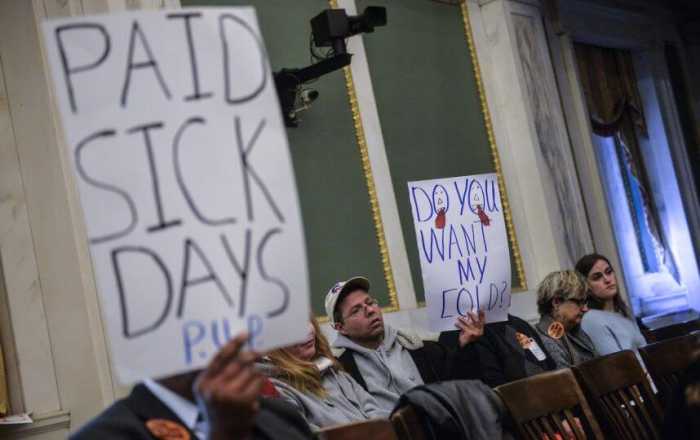Mayor Jim Kenney and other city officials vowed Monday to take new action to fight the lead poisoning of Philadelphia children.
Lead poisoning rates have plummeted in recent years, but in Philadelphia they remain twice as high as the national average. More than 300 children tested above the levels deemed safe for lead in their blood in 2015. Lead poisoning in children can cause developmental delays and other serious medical problems. “We are determined to take the steps necessary to prevent lead paint from holding our children back,” said Kenney, who announced the formation of a Childhood Lead Poisoning Prevention Advisory Group at a news conference in City Hall. Officials said that city government has had a tough time fighting lead poisoning in children because of cuts in federal funding, low screening rates, and the difficulty of enforcing existing laws on rental units. “Childhood lead poisoning today is a legacy from decades of disregard of health risks by paint companies and inaction by federal regulators,” Health Department Commissioner Dr. Thomas Farley said in a statement. “Nonetheless, this is a problem that has fallen to us to solve.” ThePhiladelphia Inquirer delved into the issue in an investigative series, “Toxic City,” exposing an issue that some leaders called “worse than the situation in Flint, Michigan.” The Inquirer found that 2,700 Philly kids tested positive for harmful levels of lead in their blood in 2015. Out of those, 369 had blood lead levels above 10 micrograms per deciliter, according to the city. Another 1,477 children had blood lead levels between five and nine micrograms per deciliter. ZIP codes 19132, 19140, and 19144 in North and Northwest Philly were found to have the most heavily concentrated results of high lead-blood level tests, according to a Childhood Lead Poisoning Prevention Plan released by the city. Some landlords seem to be evading laws like those that require homes built before 1978 to be certified lead-safe or lead-free if rented to tenants with a child age 6 or under.
“City laws prohibit lead-based paint in homes that contains a health hazard to young children, but these laws have proven difficult to enforce for the many thousands of affected housing units,” a news release from the city stated. Furthermore, federal funding for remediation of lead hazards has decreased sharply in recent years. As a result, spending for lead poisoning prevention by the city’s health department has fallen from $11 million in the 2007 fiscal year to just over $2 million this year. One change the city is taking is to modify how the Department of Licenses & Inspections (L&I) issues rental licenses to “implement the lead paint disclosure law more effectively and block continuing violators from obtaining license renewals,” the city said. Also, “L&I inspectors will receive additional training on identifying peeling paint when conducting home inspections for other reasons and referring those issues to the health department for follow up,” the city said. The city plans to take additional steps to catch lead poisoning early, including:
It remains to be seen how long these changes will take to implement. “As federal funds to help with this problem shrink, it is even more important for us to solve the problem,” Deputy Managing Director Michael DiBerardinis said in a statement. “To address lead poisoning, we need to take a more aggressive approach to remediating properties where a child has tested high for lead, as well as to prevent exposure to lead in the first place.”
Philadelphia to intensify fight against childhood lead poisoning

Mayor Jim Kenney
Charles Mostoller





























